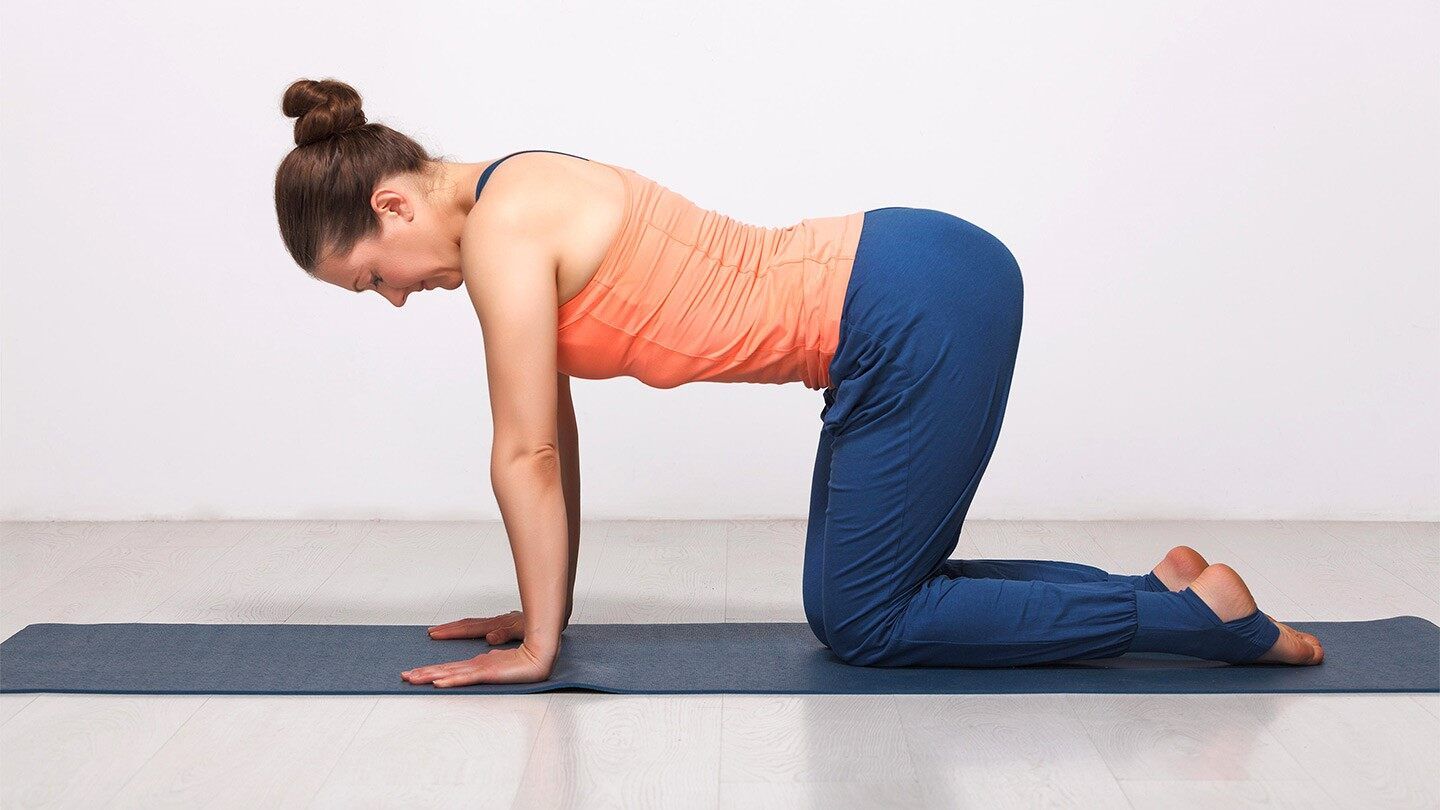Posizioni yoga per prevenire il mal di schiena migliorando la flessibilità
Il mal di schiena è vissuto da milioni di persone in tutto il mondo, causando disagio, aumento della disabilità, sintomi psicologici e riduzione della qualità della vita. Gli studi hanno dimostrato che praticare yoga è probabile che aiuti a ridurre il dolore e la disabilità e possa anche aiutare ad affrontare problemi come ansia e depressione.1 In effetti, in alcuni contesti, lo yoga può essere altrettanto efficace della terapia fisica.2
Questa serie di quattro pose è stata progettata per prevenire e gestire il mal di schiena migliorando la flessibilità spinale di base e rafforzando i muscoli di supporto del core e della colonna vertebrale. La serie ti aiuta anche a sentirti a tuo agio con i movimenti che controllano la flessione e l’estensione della colonna vertebrale.
Questa combinazione di pose è abbastanza breve da poterla praticare regolarmente anche nei giorni in cui si è a corto di tempo. Se fai già yoga, aggiungi queste pose alla tua routine. Se attualmente hai mal di schiena, assicurati di parlare prima con il tuo medico per assicurarti che questi esercizi siano compatibili con la tua condizione.1
Stretch Gatto-Mucca
:max_bytes(150000):strip_icc():format(webp)/1-catcow-56f94bb35f9b5829866e2c25.jpg)
L’allungamento gatto-mucca migliora la mobilità e la consapevolezza spinale. Inizierai la serie arrivando alle mani e alle ginocchia con i polsi sotto le spalle e le ginocchia sotto i fianchi.
- Inhale and arch your back (spinal extension). Hug your navel to your spine even though you are dropping your belly. Begin the movement from your tailbone and let it ripple up your spine so that the last motion is your head looking up.
- Exhale and round your spine (spinal flexion). Again, move the navel toward the spine and initiate the movement with your tail. Your head drops as you take your gaze to your belly.
Fai 10 allungamenti gatto-mucca per riscaldare la colonna vertebrale.2
Cane rivolto verso il basso
:max_bytes(150000):strip_icc():format(webp)/7-downdog-56f98e3d3df78c7841935724.jpg)
A cane rivolto verso il basso allunga i fianchi e i muscoli posteriori della coscia. Rafforza anche i muscoli del core profondo, che stabilizza la parte bassa della schiena. Ti sposterai in questa posa dopo aver completato i tuoi allungamenti gatto-mucca.
- Begin by coming back to a neutral spine.
- Curl your toes under.
- Exhale and straighten your legs to push back to a downward facing dog.
- Bend your knees, coming up onto the balls of your feet. Bring your belly to rest on your thighs and raise your sit bones up high. Then sink your heels, straightening the legs while keeping the high upward rotation of the sit bones.
Se hai muscoli posteriori della coscia molto stretti, mantieni una leggera curva delle ginocchia. Mantieni la posa per cinque respiri.3
Cobra Posa
:max_bytes(150000):strip_icc():format(webp)/6-cobra-updog-56f98e265f9b5829866f5d01.jpg)
La posa del cobra estende e rafforza la schiena. L’estensione della colonna vertebrale rafforza i muscoli della schiena, gli addominali e i muscoli pelvici. La posa è stata inclusa in una routine di yoga che è stata dimostrata in studi di ricerca per ridurre il mal di schiena.3
- Come back to your hands and knees.
- Lower to your belly to the ground in the most comfortable way possible.
- Once you are flat on the floor, place your forehead on your mat and your palms directly under your shoulders with your elbow hugging your sides.
- Inhale and engage the muscles of your lower back and thighs. Press the tops of your feet into the floor and lift your upper chest off the ground. Take your gaze to the floor just in front of your mat to keep your neck long.
- Make sure to keep your shoulders moving away from your ears. Keep little to no weight in your hands so that your back is doing the work. You may not be able to lift up as high, but it will be more beneficial.
- Exhale and lower your forehead back to the floor.
Ripeti questo movimento da tre a cinque volte.4
Posa del bambino
:max_bytes(150000):strip_icc():format(webp)/mid-adult-woman-doing-child-s-pose-against-white-background-135382494-57143da75f9b588cc270ad58.jpg)
La posa finale, posa del bambino, aiuta a stabilizzare la colonna vertebrale. Può essere utile dopo un backbend come cobra.
- Press into your hands to straighten your arms, lifting the chest off the mat.
- Move through a tabletop position and continue to bend your knees, bringing the hips back to rest on your feet.
- Separate your knees as wide as your mat and let your belly sink down between the knees.
Riposa qui da cinque a 10 respiri prima di tornare a quattro zampe e ripetere l’intera sequenza.







